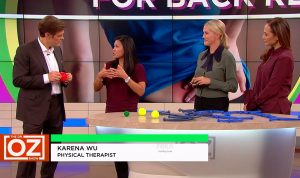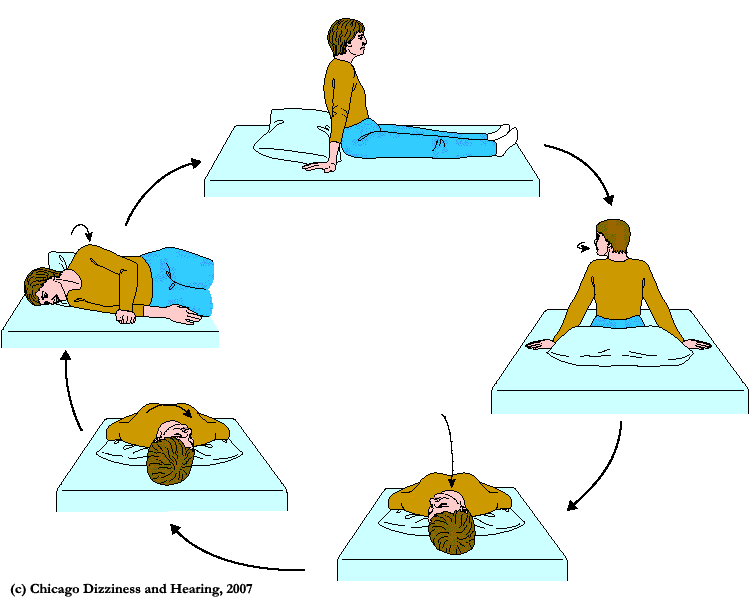 ActiveCare Physical Therapy, PC
ActiveCare Physical Therapy, PC
29 West 38th Street
Suite 601
New York, NY 10018

How to Combat Dizziness, by ActiveCare PT’s Karena Wu
By Karena Wu, PT and Clinical Director, ActiveCare Physical Therapy
As the seasons change, things go into more flux. The temperature changes, the hours of sunlight change, our mood changes and our cells can change. Things can change in the body and sometimes we are aware of it and sometimes not so much. Sometimes it is so great, that it can be incapacitating. Last spring, I had a surge of new patients complaining of a condition that affects the inner ear. Most people call it vertigo but vertigo is really the descriptive word for a symptom caused by a condition called Benign Paroxysmal Positional Vertigo.
Vertigo is a common medical complaint and is a term used to describe a feeling of motion. Patients often complain of feeling ‘dizzy’ and that the room is ‘spinning’. They can be nauseous, have a headache and be unable to move without holding onto something stationary or they might not be able to move at all. There are two causes of vertigo associated disorders: peripheral vertigo and central vertigo. Peripheral vertigo is caused by the inner ear complex, whereas central vertigo is caused by a disorder in the brain.
I treat Benign Paroxysmal Positional Vertigo (BPPV). This disorder involves calcium carbonate crystals (called otoconia) in the inner ear that dislodge and move into another area where they are not supposed to sit. This affects the information that the inner ear structure sends out which leads to a miscommunication between the eyes, the inner ear and your tactile sensory system. These three systems communicate and work together to allow for balance in the body. When one system is off, it affects the others and leads to this feeling of vertigo.
I will usually treat clients in the clinic but if the vertigo is severe enough, I will make a house call. Typically, travelers get vertigo and I end up in the hotel room trying to help them feel balanced. If anyone has had an episode of vertigo, they will be predisposed to another episode. Other risk factors include head trauma, ear or sinus infections, degeneration of the inner ear structure and prolonged positioning.

The most common form of BPPV involves the inner ear structure called the semi-circular canals and is called canalithiasis. It occurs when the otoconia crystals float freely in the semi-circular canal. When the head is moved, the movement of the crystals causes movement of the fluid in the canal. This increases the firing rate of the neurons and sends an abnormal signal to the nerve responsible for balance and hearing, resulting in dizziness. 80-90% of BPPV canalithiasis involves the posterior (or back) semi-circular canal (PSC).
Evaluation from a trained physical therapist involves listening to what the patient describes as their dizziness and what provokes it. Objective tests like the Head Thrust Test, Dix-Hallpike, Roll Test and Head Hanging Test assess which canal is involved based on the head position and the way the eyes respond. Once the involved canal is determined, the application of the appropriate technique will be applied. Typically, for the PSC, it is called the Epley Maneuver. This technique turns the head and body into 5 different positions which essentially ‘walk the crystals’ back home. The shape of the semi-circular canal forces us to rotate the head and body to literally move the crystals through the semi-circle (horse-shoe shape) and back to where they should sit.
I have a found a minimum of 60-70% success with just one application of the maneuver. You can repeat the maneuver as many times as the client can handle it during one session. If the condition is acute or of sudden onset, it can take 1 visit to position the crystals correctly. If this is a chronic condition that was never assessed and treated correctly, it can take a few visits to correct it. Treatment also includes exercises to help your vestibulo-ocular reflex system, which helps hold your gaze steady as you move your head.
To learn more about the treatment, you can visit my website at www.bestptnyc.com.
